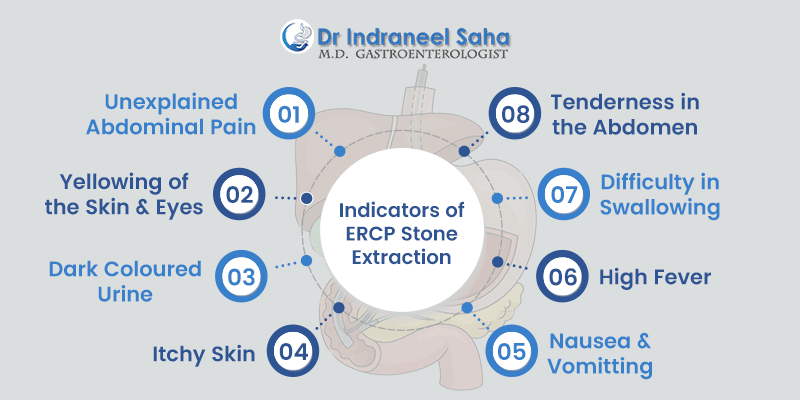- 11th Apr, 2025
- ERCP Stone Extraction
ERCP Stone Extraction: Procedure, Indicators & Advantages
Endoscopic Retrograde Cholangiopancreatography (ERCP) better known as ERCP is a powerful tool to diagnose and treat issues in the bile and pancreatic ducts. The bile ducts play a very important role in digesting and ensuring the overall well-being of the individual. It is responsible for transporting bile produced by the liver into the gallbladder.
It is responsible for breaking down the food particles and breaking down the fats. Similarly, the pancreatic ducts also carry digestive juices from the pancreas to the duodenum which also helps in the digestion of food.
One of the major advantages of ERCP stone extraction is the removal of stones from the bile and pancreatic ducts which are part of the biliary system. Stones often obstruct the flow of bile and lead to various symptoms such as jaundice, nausea and fever.
In this blog, we will dive into the procedure itself and explore how surgeons use the ERCP to remove stones from the biliary system.
ERCP : An Overview
ERCP is a minimally invasive and specialised procedure. It combines both the procedure of endoscopy and X-ray to detect the abnormalities in the bile and pancreatic duct.
The working of ERCP stone extraction mainly involves the insertion of a long flexible tube with a camera attached through the mouth into the duodenum. A contract dye is injected to visualise to capture the images of the bile and pancreatic ducts and carry out the procedure accordingly.
Before the procedure, patients are sedated to numb the area and minimise any kind of discomfort and pain. It is basically an outpatient procedure and hardly takes around 30 to 60 minutes to complete. However, it can even take longer depending upon the severity of the procedure. The stones are either removed and broken down into smaller pieces. ERCP stone extraction is the most preferred method by doctors and patients because it has a shorter recovery period and individuals can return to their daily activities in a few days.
Indicators of ERCP Stone Extraction
Take a look at some of the following symptoms indicating patients need ERCP stone extraction.
- Unexplained abdominal pain
- Yellowing of the skin and eyes
- Dark coloured urine
- Itchy skin
- Nausea and vomitting
- High fever
- Difficulty in swallowing
- Tenderness in the abdomen

When an individual experiences these symptoms, it is a clear indication that either the bile or pancreatic ducts are blocked.
Advantages of ERCP Stone Extraction
Compared to traditional open surgery, there are several advantages to ERCP stone extraction.
Non-invasive: It does not result in large incisions resulting in less bleeding and pain.
Faster recovery period: Patients are able to return to their daily activities in a few days upon following the doctor’s instructions.
Shorter hospital stay: It is an outpatient procedure and patients are discharged on the same day.
Precise diagnose: The use of fluoroscopy allows greater visualisation of the ducts, allowing doctors to carry out the procedure more accurately.
Complications Associated with ERCP Stone Extraction
ERCP is not present with any such complications unless it is performed by an experienced surgeon. Here are some of the possible complications that one might encounter if the procedure is not done correctly.
- Bleeding at the site of the procedure
- Infections causing fever, abdominal pain and nausea.
- Perforation in the bile or pancreatic ducts
- Allergic reaction to the dye
Conclusion
ERP stone extraction is an invaluable tool when it comes to treating blockage in the bile and pancreatic ducts. Patients who are suffering from stones in the bile and pancreatic ducts often get relieved from this procedure. However, make sure to discuss your concerns with your doctor to know if you are an eligible candidate for the procedure.